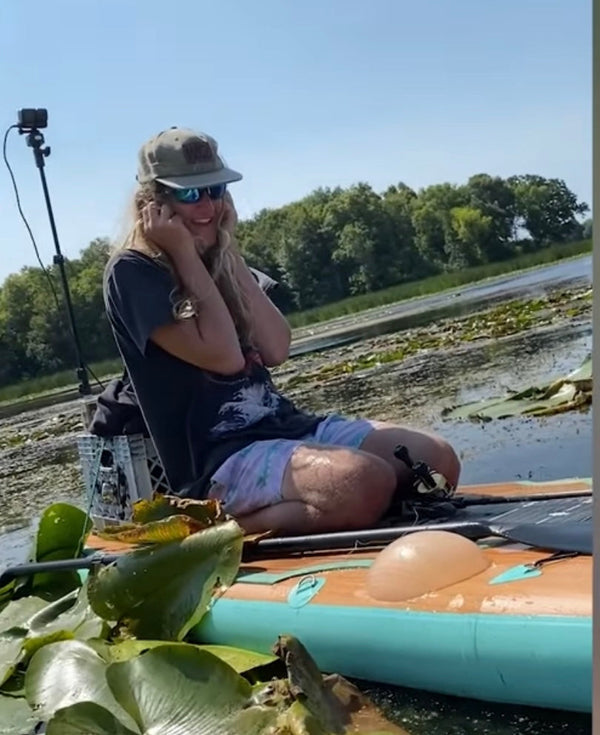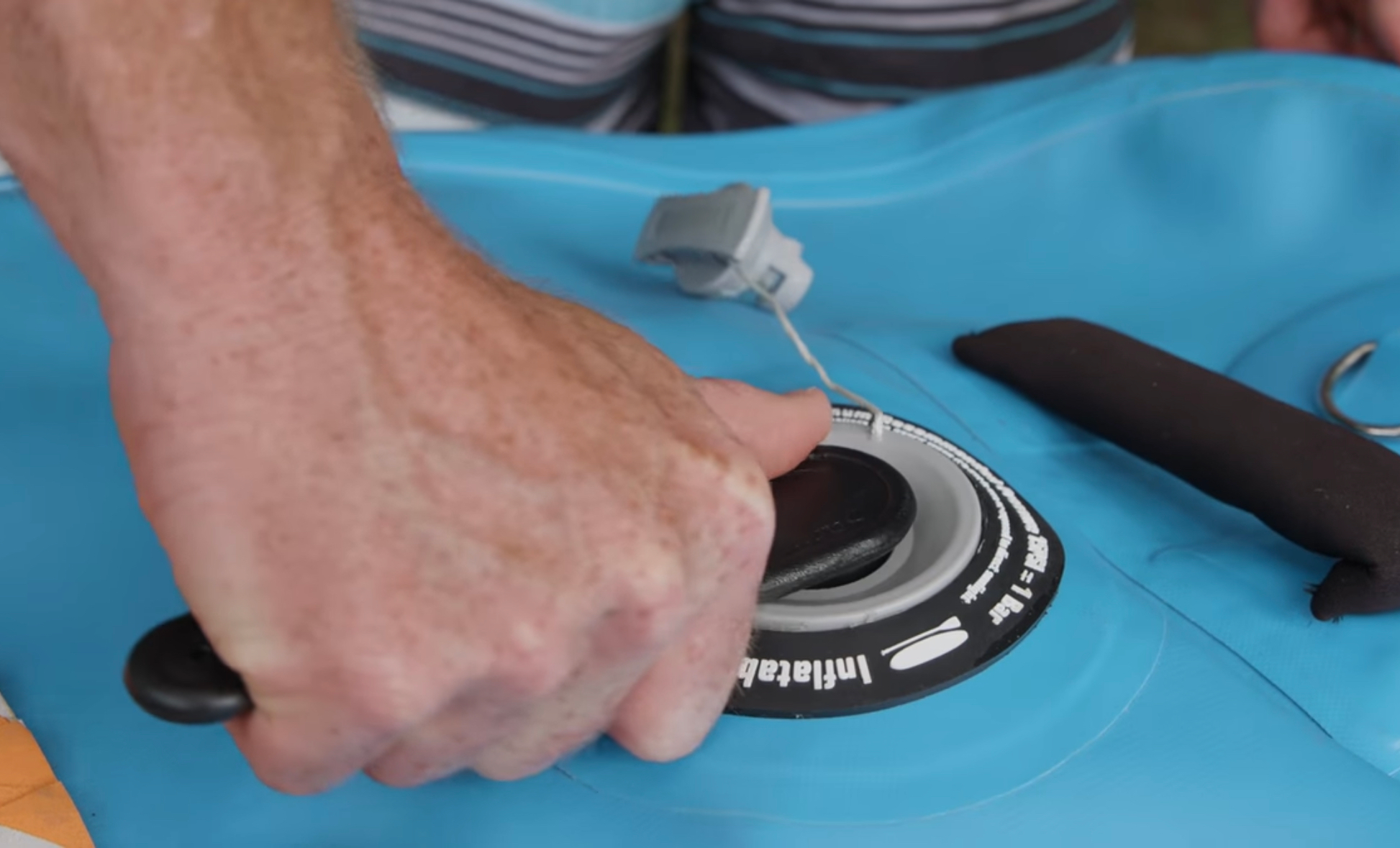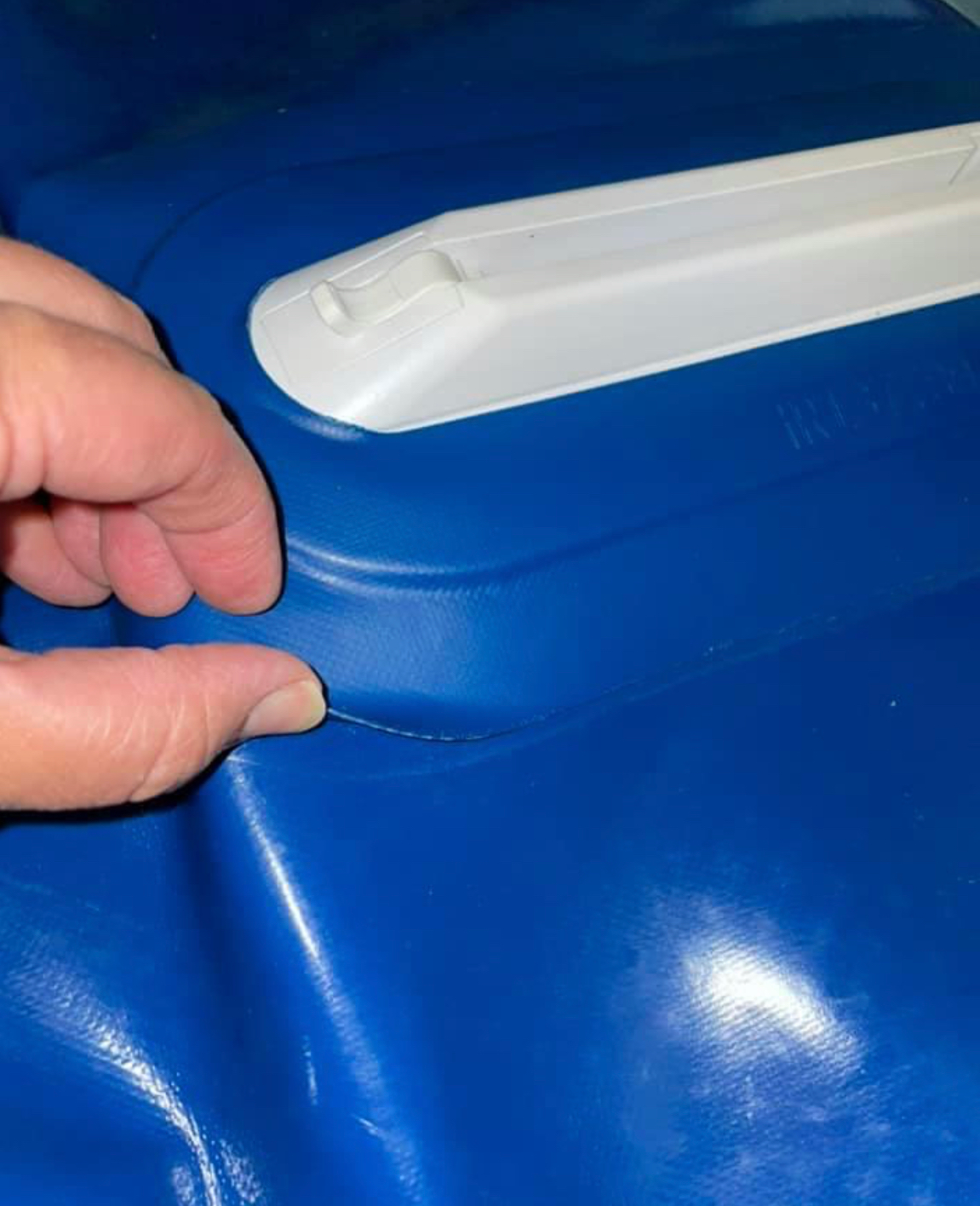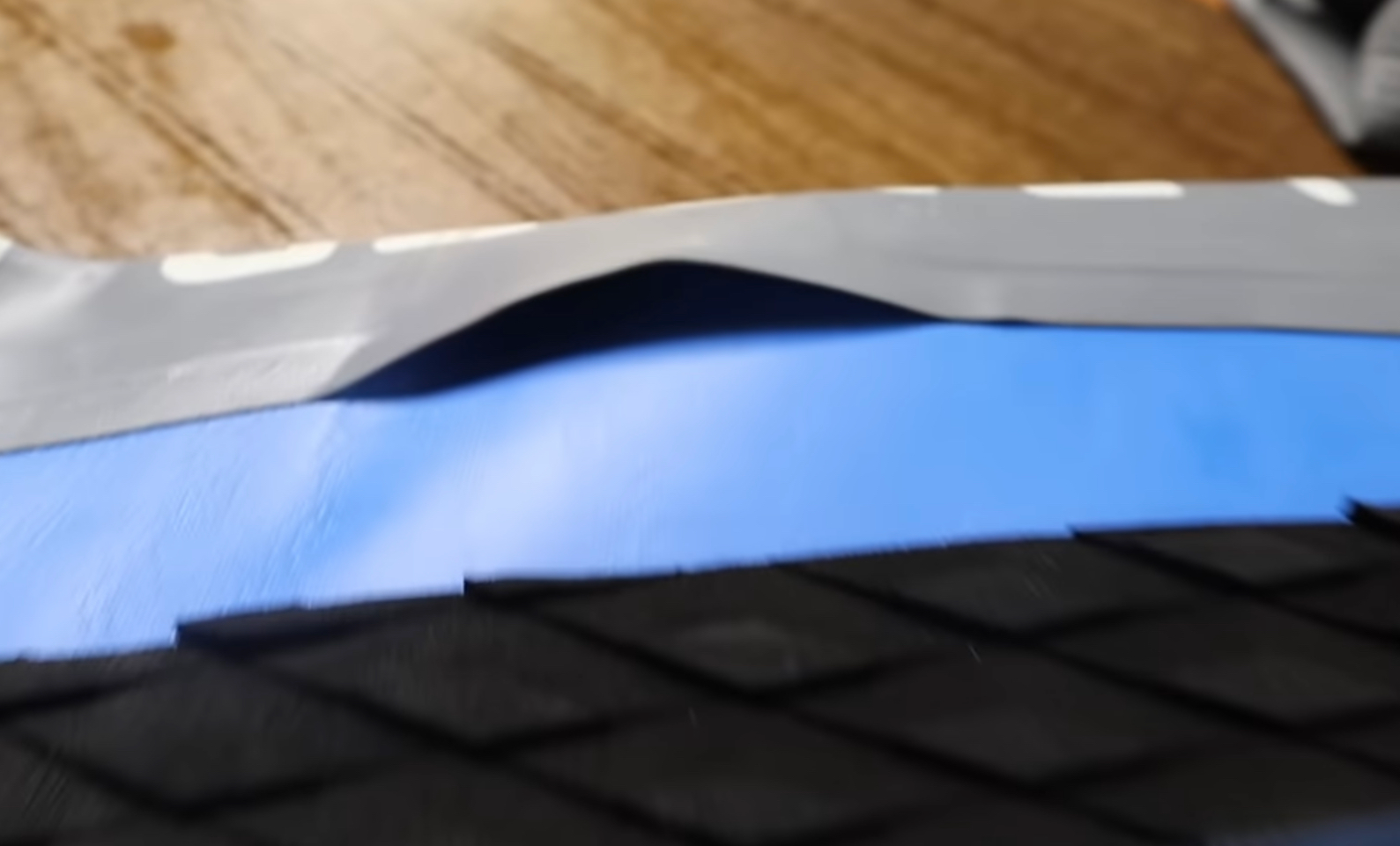
How to Tell if an Inflatable Paddle Board is Poorly Made
Not all inflatable paddle boards are built to last. This guide shows you how to spot poor-quality boards—by inspecting materials, seams, valves, and accessories—so you can invest in a SUP that’s safe, stable, and built for adventure.
Not all inflatable paddle boards are built to last. Many cheap boards look good online but cut corners on materials, seams, and accessories — often failing within a season. Knowing the red flags of poor construction helps you avoid wasting money and ensures your board is safe, durable, and fun to paddle. This guide covers the warning signs of a badly made iSUP and how to choose one that will hold up for years.
Table of contents
 3. Evaluate the Inflation Valve 4. Examine the Fin System and Accessories 5. Test Water Performance (When Possible) 6. Look at Brand Reputation and Warranty 7. Consider the Price-to-Quality Ratio FAQs About Poorly Made Paddle Boards
3. Evaluate the Inflation Valve 4. Examine the Fin System and Accessories 5. Test Water Performance (When Possible) 6. Look at Brand Reputation and Warranty 7. Consider the Price-to-Quality Ratio FAQs About Poorly Made Paddle Boards  Final Thoughts: On How to Spot a Poorly Made Inflatable paddle board
Final Thoughts: On How to Spot a Poorly Made Inflatable paddle board
Choosing the right inflatable paddle board is an important investment in your safety, performance, and overall enjoyment on the water. Unfortunately, not all boards are built the same. Some look great online but cut corners in materials, construction, and quality—leading to early wear, poor performance, or even dangerous failures.
In this guide, we’ll show you exactly how to spot a poorly made inflatable paddle board before you waste your money. Whether you are shopping for your first board or upgrading your gear, knowing what to look for can save you time, frustration, and expense.

1. Check the Construction Materials
The foundation of any inflatable paddle board is its core material. Quality starts here.
-
PVC Layers: Look for boards made with dual- or triple-layer military-grade PVC. A single thin layer can puncture or wear out quickly, especially under heavy use.
-
Drop-Stitch Fabric: Boards with woven drop-stitch construction are far stronger and more rigid than those with knitted drop-stitch. Woven fabrics tightly bind the inner threads, preventing the "soft" feeling you get with cheap boards.
-
Tip: Boards using lightweight fusion technology combined with woven drop-stitch offer the best durability-to-weight ratio.
2. Inspect the Seams Closely
Seams are a major point of failure in inflatable SUPs. This is where you can spot quality—or the lack of it—very quickly.
-
Heat-Welded Seams: High-end boards use heat welding (also called fusion bonding) to join the layers together, creating a strong, airtight seal without relying on glue.
-
Poor Gluing: Low-quality boards often have sloppy, uneven glued seams. Look for visible glue, bubbles, or gaps—signs that the seams may fail under pressure or heat.
-
Seam Reinforcement: Better boards will also reinforce their seams with extra strips of material for added durability.
👉 At Glide, all our inflatable SUPs feature heat-welded seams for a truly bombproof construction.
3. Evaluate the Inflation Valve
The inflation valve might seem like a small detail, but it plays a huge role in your board’s performance and longevity.
-
Quality Materials: Valves should be made of durable plastic or stainless steel, not cheap, brittle components.
-
Air Tightness: A poorly made valve can leak air slowly, affecting performance and requiring constant reinflation.
-
Smooth Operation: A high-quality valve opens, locks, and closes easily without sticking.
Before buying, check user reviews mentioning valve issues—or better yet, buy from brands known for their component quality.
4. Examine the Fin System and Accessories
The quality of the accessories often reflects the overall build of the board.
Fin Box: Boards with a universal U.S. fin box allow you to swap or upgrade fins easily. Cheaper boards may use proprietary systems that are hard to replace.
Fins: Solid, removable fins that lock in securely are a must for tracking and stability.
Paddle: A lightweight, adjustable paddle (preferably fiberglass or carbon blend) is a good sign of a quality kit. Heavy aluminum paddles are a red flag.
Pump and Bag: A quality pump (dual or triple action) and a durable backpack add to the overall value.
👉 Glide inflatable paddle boards include premium accessories that match the durability of the board itself.
5. Test Water Performance (When Possible)
Even the best-looking board needs to perform on the water.
-
Rigidity: A well-built board should feel solid under your feet with minimal flex, even for heavier paddlers.
-
Stability: It should track straight and offer good side-to-side stability without feeling like a pool toy.
-
Handling: It should be easy to turn and responsive to your paddle strokes.
Inferior boards tend to bow or sag under pressure, feel unstable, and can even lose their shape after a season or two.
6. Look at Brand Reputation and Warranty
Trustworthy brands stand behind their products.
Warranty Coverage: Quality inflatable SUPs come with at least a two-year warranty, with some brands offering longer protection.
Reviews and Reputation: Read verified reviews and look for real-world feedback about durability, customer service, and long-term performance.
👉 Glide SUP backs all of our boards with an industry-leading warranty and decades of expertise in paddleboard manufacturing.
7. Consider the Price-to-Quality Ratio
While it’s tempting to go for the cheapest option on Amazon, price usually reflects construction quality. A $250 board may look like a bargain, but it will often lack multi-layer PVC, woven drop-stitch, or premium accessories. This means you’ll likely replace it within a season or two—spending more in the long run.
Mid-range boards in the $500–$800 range typically offer a balance of performance and affordability, especially if you’re a beginner or casual paddler. Look for features like heat-welded seams, dual-layer PVC, and a universal fin box.
High-quality boards in the $800–$1,200 range deliver the best return on investment. They’re stiffer, safer, more reliable, and built to last for years. Add in premium accessories like carbon paddles and travel-ready backpacks, and you’ll see why experienced paddlers insist on quality from the start.
In short: spend a little more up front, and you’ll spend a lot less replacing cheap gear later.
FAQs About Poorly Made Paddle Boards
Are cheap inflatable paddle boards dangerous?
Yes. Boards made with weak seams or low-quality valves can deflate unexpectedly, putting you at risk if you’re far from shore.
Can I fix a poorly made SUP with patches or upgrades?
Minor leaks can be patched, but you can’t fix fundamental flaws like bad seams or thin PVC. Starting with quality is always better.
How long should a good inflatable paddle board last?
A well-constructed SUP should last 5–10 years with proper care. Poorly made boards often fail within 1–2 seasons.
Final Thoughts: On How to Spot a Poorly Made Inflatable paddle board
An inflatable paddle board should be a tool for adventure, exploration, fitness, and fun—not a source of stress. When you know what to look for—strong materials, excellent seams, solid valves, smart accessories, and a reputable brand—you can choose a board that will perform beautifully and last for years.
The bottom line? Don’t be fooled by glossy marketing photos or suspiciously low prices. Take the time to evaluate the construction, components, and brand reputation before making your purchase.
Choosing quality means peace of mind on the water, whether you’re paddling calm lakes, coastal bays, or remote rivers. A well-made board gives you confidence, stability, and performance every single time you paddle.
👉 Ready to invest in a paddle board you can trust? Explore Glide’s collection of ultra-durable inflatable SUPs, built for real-world adventures and backed by our industry-leading quality commitment.
Why are some inflatable paddle boards so cheap?
Budget boards often use thin PVC, glued seams, and low-quality accessories to cut costs — which dramatically reduces durability.
How long will a poorly made inflatable SUP last?
Cheap inflatables may last only 1–2 seasons before seams fail, valves leak, or the board loses stiffness.
What’s the biggest sign of a bad inflatable paddle board?
Boards that flex underfoot, won’t hold proper PSI, or feel unstable are usually poorly made.
Can cheap boards be fixed with patches?
Minor leaks can be patched, but if the seams or rails are failing, the board usually isn’t worth repairing.
Are all budget boards bad?
Not necessarily — some offer decent value. Look for brands that still provide multi-layer PVC, drop-stitch cores, and at least a 2-year warranty.





